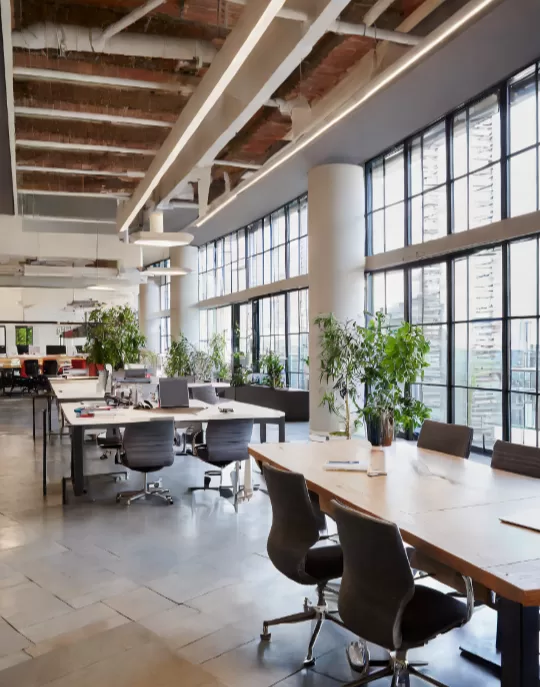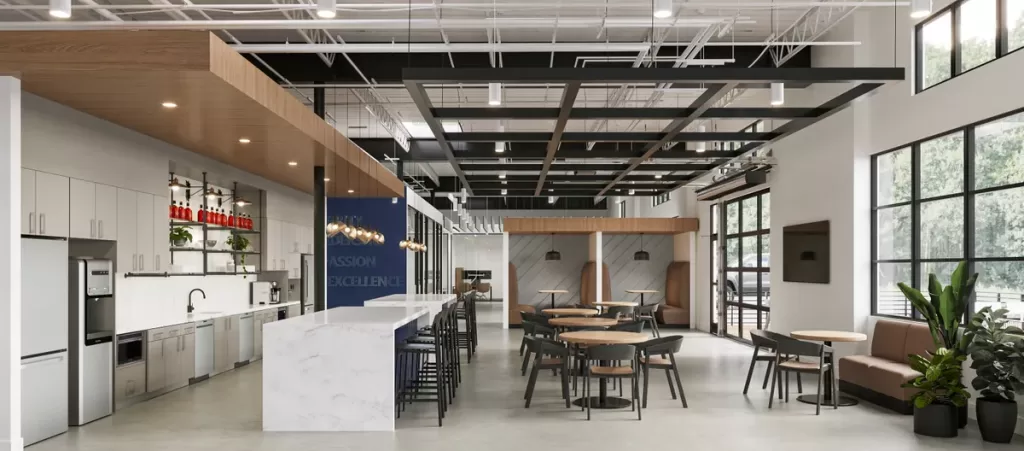Open Concept Renovations: Are They Worth the Cost?
Open concept renovations are a hot topic in the world of commercial property management. They represent a shift from traditional, compartmentalized spaces to more fluid, adaptable environments.
But are they worth the cost?
This question is at the forefront of many property managers’ minds. The answer, however, is not straightforward. It depends on a variety of factors, from the specific needs of the occupants to the long-term goals of the property owner.
In this article, we delve into the world of open concept renovations. We explore their benefits, challenges, and the latest trends shaping their design.
Our aim is to provide you with a comprehensive understanding of open concept renovations. This will equip you with the knowledge to make informed decisions about your property’s design and renovation strategy.
So, let’s dive in and explore: Are open concept renovations worth the cost?
What is Open Concept?
Open concept renovations transform spaces by removing unnecessary walls. They create a seamless flow from one area to another. This approach encourages interaction and enhances flexibility.
Typically, these designs feature a large, undivided space. They combine different functional zones into one. The goal is to optimize light, space, and access, making them appealing for both residents and businesses.

The Evolution of Open Floor Plans
The open floor plan was popularized in the mid-20th century. Initially embraced by modernist architects, it quickly caught on in residential and commercial spaces.
Today, its appeal lies in adaptability and integration. It’s a design trend that continues to evolve, influenced by changing work and lifestyle needs. This evolution has made it an enduring choice in modern renovations.
Psychological and Social Impacts of Open Spaces
Open spaces play a role in fostering collaboration. They encourage spontaneous interaction, which can boost creativity and communication within teams.
However, they can also affect concentration levels. While openness promotes teamwork, it’s crucial to strike a balance with privacy to ensure productivity. Thoughtful design can address these psychological and social considerations effectively.
The Business Case for Open Concept Renovations
Open concept renovations offer significant advantages for commercial properties. They can enhance operational efficiency and attract tenants. With a rising demand for flexible office environments, open layouts cater to modern business needs.
Additionally, these renovations can help align spaces with company culture. They reinforce brand identity, improving both client perceptions and employee satisfaction. Such transformations can position a property competitively in today’s dynamic market.

Space Optimization and Energy Efficiency
Optimizing space is a key advantage of open concept designs. By eliminating barriers, spaces become multifunctional and adaptable. This flexibility can support varied workplace activities seamlessly.
Energy efficiency is another benefit. Open layouts improve natural light flow, reducing reliance on artificial lighting. This can lower energy bills and contribute positively to sustainability goals.
Property Value and ROI
Investing in open concept renovations can increase property value. Modern designs that maximize usability and aesthetics are attractive to potential buyers or tenants. These improvements can lead to higher rental yields and market valuation.
Additionally, the return on investment (ROI) for such renovations is compelling. The initial costs are often offset by long-term gains in tenant retention and property desirability. A well-designed space can translate to substantial financial returns.
Cost-Benefit Analysis of Open Concept Renovations
Analyzing the costs and benefits of open concept renovations is crucial. Initial expenses might be daunting, but potential long-term gains are significant. Increased property value and energy savings can offset upfront costs.
Considering financial aspects helps property managers make informed decisions. A well-planned renovation can enhance competitiveness and attract high-quality tenants. Weighing both short and long-term factors is essential for successful outcomes.
Short-Term Expenses vs. Long-Term Gains
Open concept renovations often require substantial initial investments. Construction, materials, and design services contribute to high costs. However, these expenses can lead to considerable long-term benefits.
The potential for higher property value is a key factor. Enhanced functionality and aesthetics can attract premium tenants. Energy efficiency improvements can also result in reduced operating costs over time.
The Importance of Skilled Contractors
Choosing the right contractor is vital for renovation success. Experienced contractors ensure quality work, minimizing costly mistakes. They bring expertise in modern design and sustainable practices.
A skilled contractor can guide you through complex renovation processes. They help navigate building codes and regulations, ensuring compliance. This expertise can greatly influence project outcomes, maximizing return on investment.

Successful Commercial Open Concept Renovations
Several companies have reaped benefits from open concept designs. A tech firm created collaborative zones that boosted teamwork and innovation. A design agency improved client impressions with a modern, open reception area.
These transformations not only improved aesthetics but also operational efficiencies. The result was a workspace that supported growth and attracted talent. Such examples underscore the potential of open concept renovations in commercial settings.
Lessons Learned and Best Practices
Studying past renovations reveals important lessons. Effective acoustic solutions are crucial in noisy environments. Strategic use of furniture and partitions maintains balance between openness and privacy.
Adaptability is also key; designs should accommodate evolving business needs. Involving employees in the planning process ensures practical and user-friendly spaces. These best practices guide successful implementation of open concept renovations.
Conclusion: Making the Decision for Your Property
Deciding on open concept renovations requires careful consideration of several factors. Property managers should weigh the benefits, such as increased collaboration and improved aesthetics. The potential for higher property value and enhanced technology integration also contributes to the appeal.
However, challenges like noise and privacy concerns demand attention and strategic solutions. It’s crucial to conduct a thorough cost-benefit analysis, examining both short-term costs and long-term gains. Involving skilled contractors and engaging with employees in the design process can ensure a successful outcome. By understanding the unique needs of their property, managers can make informed renovation decisions.
